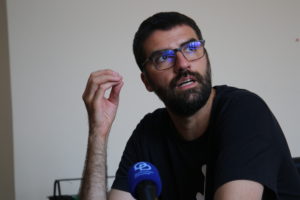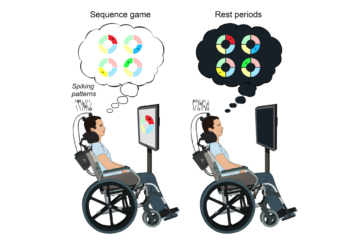
Dario SIGARI,
Former Fyssen 2021
The figurative portable art of Grotta Romanelli (Southern Italy) – Download the poster
Grotta Romanelli (GR) (Castro, LE) has yielded the most consistent heritage of Palaeolithic portable art in Italy. The finds that fall into this class of objects number over 200 and express a wide variability not only in terms of the type of support (rock and bone), but even thematically (zoomorphic, geometric, anthropomorphic figures), stylistically and technologically (scratching with different tools and or points, and painting).
The intense artistic activity, between the end of the Pleistocene and the beginning of the Holocene, in this cave has been known since the first investigations, in the early 20th century. The impressive record of portable and parietal art made immediately GR a reference site in the Palaeolithic studies, together with some Spanish and French caves (Parpallò, La Pileta, Baume-Latrone and Ebbou). So, it was proposed the existence of a “Mediterranean artistic province” (Graziosi, 1932), within which GR, thanks to its geographical location, acted as a connecting point between different artistic trends. However, recent studies have shown that this paradigm in now largely outdated (Sigari et al., 2021).
New research activities focused on the artistic evidence of this site, made it urgent to systematically review the symbolic production of GR, which had not been the subject of new critical studies for over fifty years.
This urgency materialised in the research project “Dec.O. – Decorated Objects of Romanelli Cave, a key site of the late Pleistocene-early Holocene Mediterranean area”, which aims to investigate the dynamics in the imagery on portable art and rock art in deep-time and the past socio-cultural influences and borders between western and southern Europe and the regions overlooking the Mediterranean Sea.
In this work we present the first results about the figurative portable art objects of GR.
More information here
Dario Sigari defended, in 2018, his PhD at the University of Tarragona, within the International Doctorate in Quaternary and Prehistory framework, under the supervision of Dr. Marcos García Diez and Luiz Oosterbeek. He got his MA in Prehistory at the University of Ferrara with a research over the spatial organisation of the Italian Upper Palaeolithic sites to understand the social structures of the Upper Palaeolithic societies. His BA thesis work, defended at the University of Milano, proposed the study of an engraved rock with Palaeolithic figures in Gobustan (Azerbaijan).
Thanks to his doctorate he could propose a systematic review of the Upper Palaeolithic rock art of the Italian Peninsula, replacing within the wider context of the Palaeolithic art tradition, and finally challenging some of the ideas associated with the south-west-European-centric artistic tradition.
During the 15 years dedicated to the prehistoric rock art, he has defined his research objectives which can be resumed in: the chronology of the Palaeolithic art of Italy and Azerbaijan (Gobustan, UNESCO WHS); understanding the cultural dynamics and relations that existed in the Upper Palaeolithic according to dispersals, similarities and differences of the rock art production of the Mediterranean region; the relationships between rock art sites and landscapes in terms of social and economic use of the territories.
These topics are at the base of his project « Dec.O. – Decorated Objects of Romanelli Cave, a key site of the late Pleistocene-early Holocene Mediterranean area » undertaken between the CNRS-UMR5608 TRACES in Toulouse (France) and the CNR-ISPC in Roma (Italy), and funded by the Fyssen Foundation.
The research project, through a systematic and interdisciplinary examination of the portable art objects from Grotta Romanelli (southern Italy), allowed exploring the cultural geographies of the last fisher-hunter-gatherer societies. In particular, considering the production of portable art in this Apulian site, it addressed the question of change, resilience and cultural continuity from the end of the Last Glacial Maximum (LGM) to the beginning of the Holocene, i.e. between 18 and 10 cal ka BP, a key moment for human societies when, faced with changing climatic and environmental conditions, they evolved towards productive and sedentary socio-economic systems.
Maximum (LGM) to the beginning of the Holocene, i.e. between 18 and 10 cal ka BP, a key moment for human societies when, faced with changing climatic and environmental conditions, they evolved towards productive and sedentary socio-economic systems.
Now he has been involved in a research project, coordinated by the MUSE-Museo delle Scienze in Trento (Italy) in collaboration with the University of Trento, to study the Palaeolithic painted stones of the Dalmeri shelter (northern Italy), so continuing his investigations in the field of the Italian Palaeolithic ar


